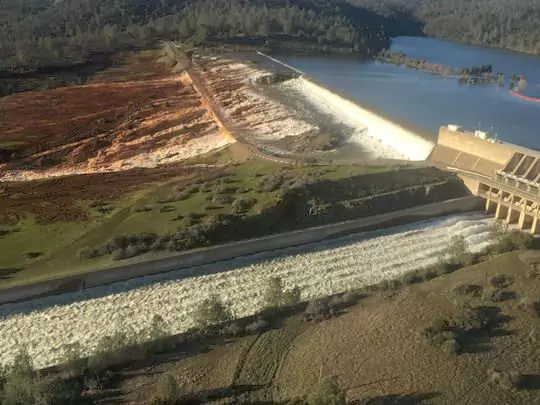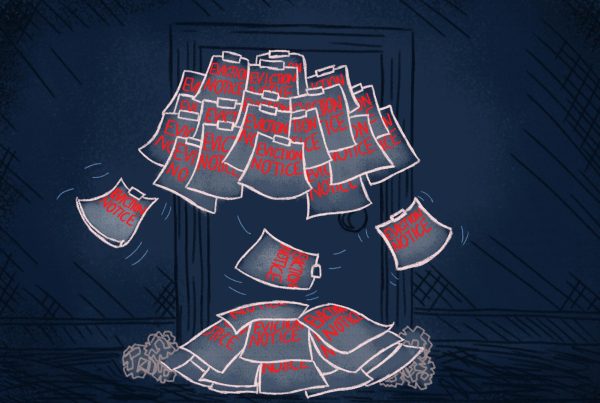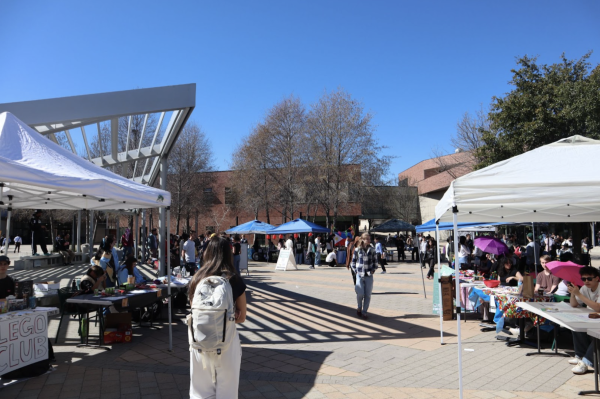Oroville dam potential failure causes evacuation of about 200,000 Californians

Helicopter photo taken by the California Department Of Water Resources.
February 22, 2017
The Oroville Lake and dam, the nation’s tallest, has been dangerously bombarded with heavy rainfall causing many structural issues, such as concrete breaking apart and the lake rising to levels which have not been recorded in decades.
On Feb. 11, Oroville reached a dangerous capacity causing the main spillway, as well as a never before used emergency spillway, to automatically go into effect.
Due to the possibility of complete structural failure involving soil erosion surrounding a damaged spillway ramp, an evacuation order was announced on February 12th for Yuba, Butte, and Sutter Counties.
Surrounding highways became parking lots, home owners and businesses were forced to leave their property. Some people even resorted to running down the street warning others of the potential danger.
According to the Associated Press, an estimated 188,000 people, were displaced.
In a press conference Butte County Sheriff Kory Honea said he “recognizes that this is displacing a lot of people. We did this because our primary purpose is to ensure public safety. It was a hard decision to make. Getting those people home is important to me, but I have to be able to sleep at night knowing that they are back in that area.”
During the past few months, billions of gallons of water were controllably released out of the main spillway, moving at 50 miles per hour onto a concrete ramp designed for guiding large amounts of water out of the main spillway and into the Feather River.
By the beginning of early February the sheer amount of force coming out of the spillway gates ruptured a small hole in the middle of the concrete ramp resulting in the gates of the main spillway to close, causing the water levels of the lake to rise even faster.
One theory for the concrete collapse is a process called “cavitation,” when tiny bubbles or water vapor begin vibrating the concrete surface enough to cause the material to break apart.
In an interview with The Mercury News, Paul Tullis, professor of civil engineering at Utah State University, explains how cavitation, “starts with small holes, but it can break off big chunks of concrete. It’s like a big grinder. It causes concrete to be torn apart.”
Another theory for the concrete collapse comes from Nicholas Sitar, professor of environmental engineering at U.C. Berkeley, who believes the drought caused the earth to shrink under the concrete ramp. “[The ground] shrinks and swells, they have a way of changing volume with seasons. Anyone who has an old house where the doors open and close differently through the year has seen it,” Sitar also said to The Mercury News.
Regardless of the damaged concrete ramp, authorities decided to release enough water to fill “an Olympic sized swimming pool every second” down the damaged concrete ramp widening the once small hole and creating a massive crater under a waterfall at the bottom of the dam.
The main spillways in most dams are designed to release large amounts of water controllably downstream when lake capacity is close to reaching 100 percent, primarily to avoid water washing over the dam walls.
A never before used emergency spillway, essentially a lower section of the dam off to the side of the main spillway with only soil to guide the water downhill, went into effect once the main spillway could not lower the lake’s capacity below 100 percent.
As soon as the emergency spillway began releasing water down the mountain side, authorities began to notice further soil erosion next to the massive crater the main spillway had already established.
Bill Croyle, acting Director of the California Department of Water Resources explained in a press conference how the department decided to “increase the main spillway output from 100,000 cubic feet to 200,000 cubic feet per second to hopefully lower the lake by 50 feet before the next storm comes in.”
Temporary repairs were applied to the crater and soil erosion area near the emergency spillway by using helicopters to dump large boulders and pouring concrete in between the crevasses.
Dr. Ray Goralka, biology professor at DVC said, “The first issue that comes to mind is when releasing that much water [into the river] fisheries and natural habitats downstream will be affected. I believe there are a couple of fisheries nearby the dam.”
Fishing within the Feather River and the surrounding lake was temporarily suspended when the evacuation went into place, preventing unaware people from being in harm’s way.
After three days of panic and migration, the evacuation was eventually lifted once multiple federal and state departments were satisfied with repairs and hundreds of thousands were allowed back into their homes.
After decades of neglect, California infrastructure finds itself in a very tough position where old levees and dams need to be repaired or replaced before Mother Nature causes a catastrophe.













































































